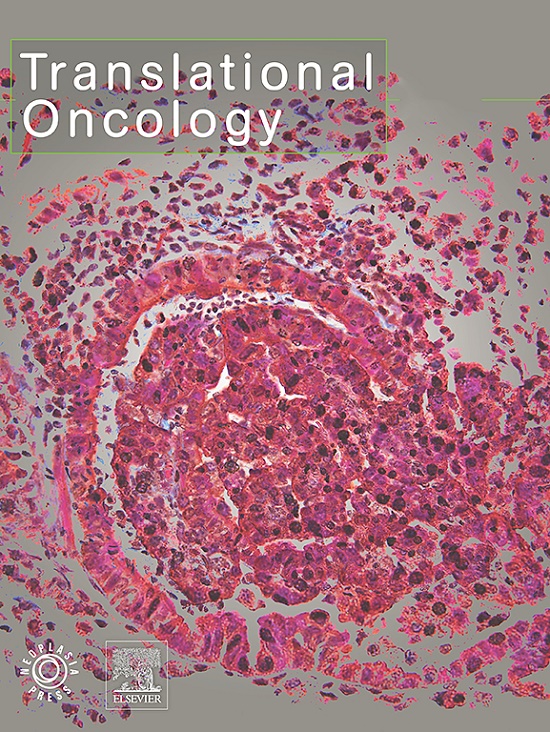ConvXGB:利用多参数MRI图像预测早期宫颈癌术后复发风险的新型深度学习模型。
IF 5
2区 医学
Q2 Medicine
引用次数: 0
摘要
背景:准确估计宫颈癌复发风险对制定个体化治疗方案具有关键作用。我们的目标是开发和外部验证端到端深度学习模型,通过使用多参数MRI图像预测宫颈癌患者术后复发风险。方法:收集3所医院406例宫颈癌患者的临床病理资料及多参数MRI影像。结合卷积神经网络(CNN)和极限梯度增强(XGBoost),设计了一种新的深度学习模型“ConvXGB”,用于预测复发风险。与深度学习放射-临床模型、临床模型、常规放射组学图和现有的组织学特异性工具相比,使用随时间变化的曲线下面积(AUC)来评估ConvXGB模型的预测性能。评估ConvXGB模型在预测无复发生存期(RFS)和总生存期(OS)方面的潜力。结果:ConvXGB模型在预测复发风险方面优于其他模型,在测试队列中,1年和3年rfs的auc分别为0.872(95% CI, 0.857-0.906)和0.882(95% CI, 0.860-0.904)。该模型具有较好的鉴别性、校正性和临床实用性。采用Grad-CAM分析来帮助临床医生更好地理解预测结果。此外,Kaplan-Meier生存分析显示,被ConvXGB模型分层为高危组的患者,其累积复发风险率较高,预后较差。结论:ConvXGB模型可以预测宫颈癌患者术后复发风险,并对RFS和OS的风险进行分层。本文章由计算机程序翻译,如有差异,请以英文原文为准。
ConvXGB: A novel deep learning model to predict recurrence risk of early-stage cervical cancer following surgery using multiparametric MRI images
Background
Accurate estimation of recurrence risk for cervical cancer plays a pivot role in making individualized treatment plans. We aimed to develop and externally validate an end-to-end deep learning model for predicting recurrence risk in cervical cancer patients following surgery by using multiparametric MRI images.
Methods
The clinicopathologic data and multiparametric MRI images of 406 cervical cancer patients from three institutions were collected. We designed a novel deep learning model called “ConvXGB” for predicting recurrence risk by combining the convolutional neural network (CNN) and eXtreme Gradient Boost (XGBoost). The predictive performance of the ConvXGB model was evaluated using time-dependent area under curve (AUC), compared with the deep learning radio-clinical model, clinical model, conventional radiomics nomogram and an existing histology-specific tool. The potential of the ConvXGB model in predicting the recurrence-free survival (RFS) and overall survival (OS) was assessed.
Results
The ConvXGB model outperformed other models in predicting recurrence risk, with AUCs for 1 and 3 year-RFS of 0.872(95% CI, 0.857–0.906) and 0.882(95% CI, 0.860–0.904) respectively in the test cohort. This model showed better discrimination, calibration and clinical utility. Grad-CAM analysis was adopted to help clinicians better understand the predictive results. Moreover, Kaplan–Meier survival analysis revealed that patients who were stratified into high-risk group by the ConvXGB model were significantly susceptible to higher cumulative recurrence risk rates and worse outcome.
Conclusion
The ConvXGB model allowed for predicting postoperative recurrence risk in cervical cancer patients and for stratifying the risk of RFS and OS.
求助全文
通过发布文献求助,成功后即可免费获取论文全文。
去求助
来源期刊

Translational Oncology
ONCOLOGY-
CiteScore
8.40
自引率
2.00%
发文量
314
审稿时长
54 days
期刊介绍:
Translational Oncology publishes the results of novel research investigations which bridge the laboratory and clinical settings including risk assessment, cellular and molecular characterization, prevention, detection, diagnosis and treatment of human cancers with the overall goal of improving the clinical care of oncology patients. Translational Oncology will publish laboratory studies of novel therapeutic interventions as well as clinical trials which evaluate new treatment paradigms for cancer. Peer reviewed manuscript types include Original Reports, Reviews and Editorials.
 求助内容:
求助内容: 应助结果提醒方式:
应助结果提醒方式:


